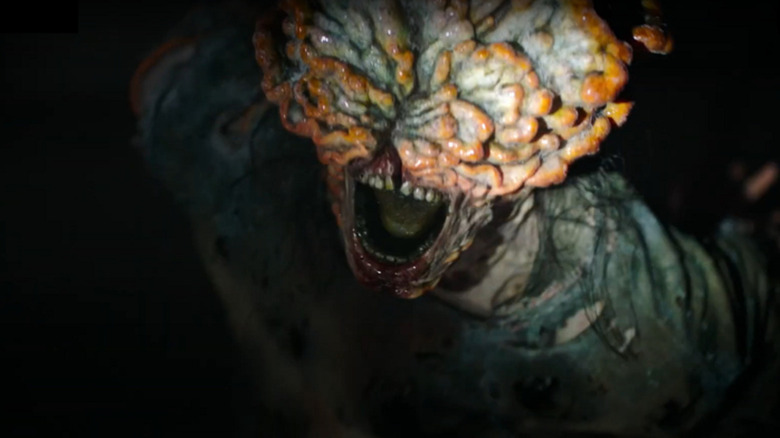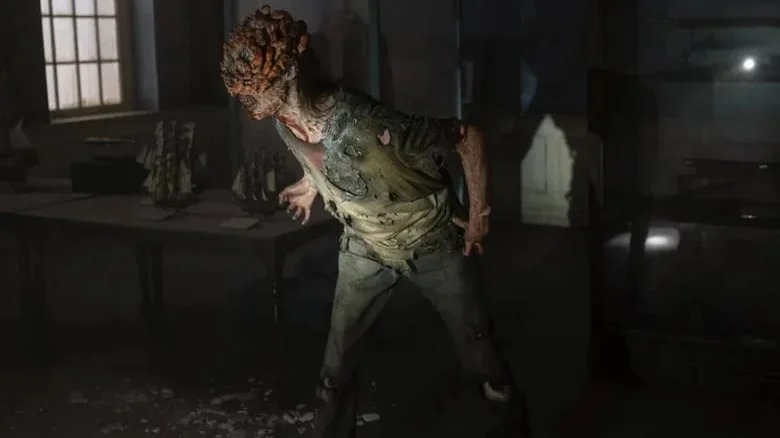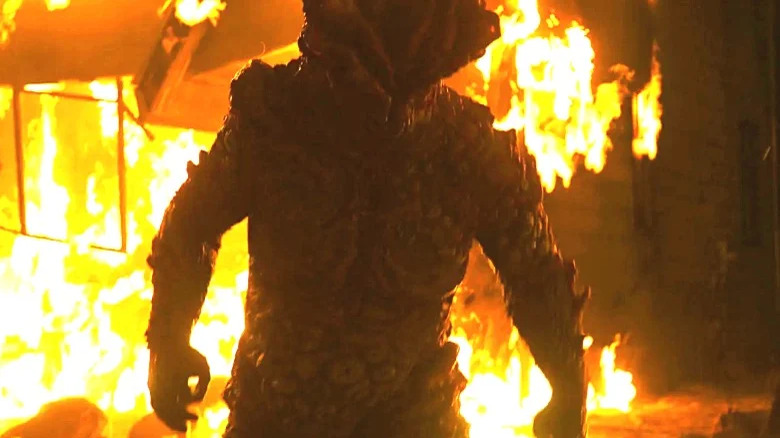The Last Of Us Season 1 Kind Of Wasted Its Fungus Zombies
This post contains spoilers for "The Last of Us" season 1.
The post-apocalyptic world of "The Last of Us" is intricately built to feel unique within the landscape of zombie shows and movies. The detail-rich sets and grand vistas of decayed buildings add to the decayed look of the show, the well-rounded characters help the story feel grounded in emotion ... and then there are the zombies. "The Last of Us" could have easily just been another zombie show like "The Walking Dead," but it stands out by going hyper-specific with its world-ending infection. Rather than flesh-eating ghouls that rise from the grave to look for brains, the Cordyceps infection is effectively scary because of how much it is rooted in actual science. The infection is quite real, and the Cordyceps mushrooms are also quite edible (making cannibalism in this world absolutely stupid).
Indeed, the Infected are one reason why "The Last of Us" stands out among zombie stories on TV and film, because we get different kinds of Infected that offer a number of different looks and threats while also showing the progression of the infection.
Yet looking back, season 1 of "The Last of Us" kind of just wasted the Infected. Sure, they are not exactly the main point of the story, and sure, we did see some Infected. But for a show set in a world where Infected are the biggest fear — a world totally ravaged by this scenario — there are surprisingly few scenes were we see any.
An underwhelming threat
"The Last of Us" is an interesting adaptation. The first season is incredibly faithful, to the point where it can sometimes feel like you're just watching a collection of cutscenes from the game as the show recreates not just scenes or dialogue, but even some specific shot choices.
The show was often at its best when significantly changing the source material, often by adding things not present in the game. There was the expansion of Bill and Frank's story, or the addition of flashbacks that contextualized the outbreak and even Ellie's immunity. These helped make the show's world feel richer, but also took time away from the main story, forcing the season to speed through certain things to hit all the major plot points, making it feel rushed.
The other big downside to these additions is that we barely had time to actually deal with the Infected, despite them being the catalyst for the whole story. The Infected appear in less than half the episodes, and often for just a scene or two. We spend more time with militias that all look the same than we spend with the unkillable infection that broke the world.
As the second episode sort of hints, Joel, Tess, and Ellie — as well as presumably a large portion of the population — don't know there are different types of Infected. This is meant to make the reveals of the bloaters and the clickers more effective since not even the characters know about them, but the show sort of drops the ball. Other than a few seconds of fear, the characters barely react to the Infected. Joel and Ellie were clearly shocked by the deaths of Henry and Sam, sure, but the two didn't even flinch at the sight of a massive bloater, nor did they mention it again.
A missed opportunity
Also in the second episode, we are introduced to a fascinating addition to the lore of the games: The Infected being able to communicate through Cordyceps vines spread out through cities. This should make the Infected scarier and more present, but the show sort of forgets about it and never does anything with this information.
This is a problem that the showrunners themselves have addressed in interviews. "There may be less action than some people wanted because we couldn't necessarily find significance for quite a bit of it, or [there was] concern that it would be repetitive," Craig Mazin said in a recent virtual press conference /Film attended. Though he teased more and different kinds of infected in season 2, that doesn't take away from the missed opportunity in season 1.
"The Last of Us" is a great show and a fascinating adaptation. But by downplaying the importance of the creatures and the infection that give the story its urgency, it disrespects both the source material and the audience that tunes in to watch at least a few zombies in their zombie show.


